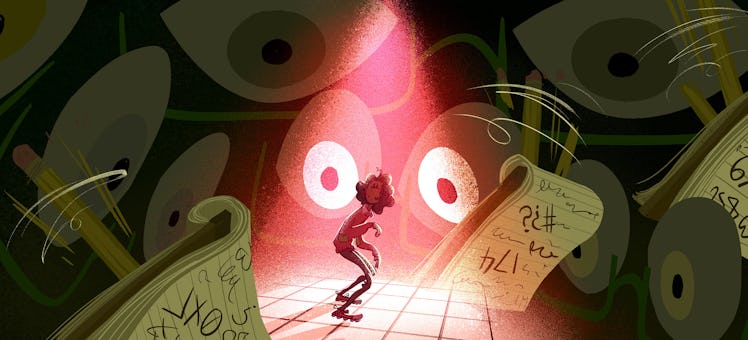What Do the New FICO Score Changes Mean? Is My Credit Score Screwed?
Don't panic just yet. While FICO announced changes to new credit scores, a lot of people will actually see their number go up.

What the hell is happening with the new FICO scores coming out? I find the entire credit score industry wildly confusing to begin with, and this is only adding to it. My wife and I have student loan debts that we’re paying down each month, some credit card debt, and both have decent credit scores that we’ve been working hard to raise (both are low-to-mid 600s right now). What will these changes mean? Are those of us dealing with debt just more screwed? — Justin, via email
Justin, I wouldn’t the panic button just yet. Some of the headlines about these FICO changes have tried to whip the public into a frenzy, alerting them that millions of consumers will see their credit scores take a big dip.
What’s sometimes missing is the fact that a roughly equal number of people will see their numbers go up. The good news for you is that most of the folks in the latter category are consumers who, like you, are making on-time payments and keeping their balances in check.
It’s easy to see why folks get nervous about changes like this. A credit score can make or break your chances of getting a loan with a good interest rate. It can feel like the people behind FICO — still the king of the credit-scoring models — have you by the jockstrap. But context is important here.
Keep in mind that when the latest versions, FICO Score 10 and the FICO Score 10 T, come out this summer, most banks won’t be using them. A lot of lenders use older iterations of the scoring system, in part because those earlier variants have been hard-wired into their underwriting process; a new model throws a wrench into the whole thing. Even though its parent, Fair Isaac Corporation, released FICO 9 six years ago, FICO 8 is still the most commonly used method today (most mortgage lenders use even older ones).
So what’s changing with these latest formulations? Both Score 10 and Score 10 T will more heavily weigh personal loans because some consumers consolidate their credit card debt into a single loan, only to continue ringing up balances on their plastic. As it turns out, lenders are wary of that sort of thing.
The “T” version also marks the use of so-called “trended data” for the first time. In non-jargon terms, that means the FICO model will look back at your borrowing habits for the past two years to see which direction you’re heading in. With older versions, your score is just a snapshot of your credit usage as it looks today.
That simple feature could make a significant impact on your FICO number, says Matt Schulz, chief industry analyst at CompareCards.com. “All things being equal, someone who has $5,000 in credit card debt but has been steadily paying it down for a year will be viewed more favorably than someone who has $5,000 in credit card debt but has seen the debt grow in recent months,” says Schulz. “It rewards folks for doing the right thing over time.”
In interview with NPR, Joanne Gaskin of FICO said that about 40 million Americans will end up with scores that are at least 20 points lower. A roughly equal number will see their score increase by that amount. So the gap between good and bad scores is about to get wider. Schulz says someone like you, who’s gradually chipping away at your balances, will most likely end up faring better with Score 10 T.
While it’s understandable that people focus on these new scores, it’s worth bearing in mind that the basic DNA of these different FICO versions won’t change this summer. The same basic habits that mattered with older versions are still paramount.
“People tend to overthink credit, but it ultimately comes down to three things: paying your bills on time every time, keeping balances as low as possible and not applying for too much credit too often,” says Schulz. “Do those things repeatedly over the course of time and your credit is going to be just fine.”